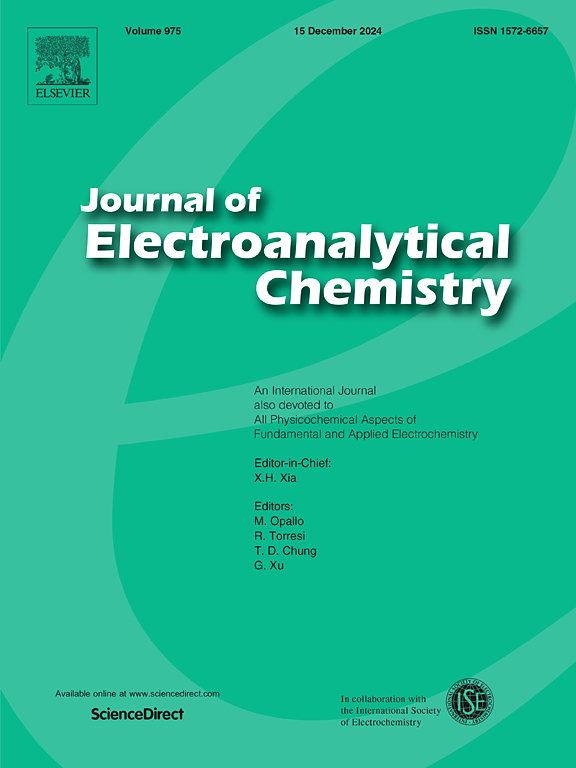Constructing a core-shell structured hydroxide nanocatalyst based on dielectric barrier discharge microplasma etching for OER under alkaline condition
IF 4.1
3区 化学
Q1 CHEMISTRY, ANALYTICAL
引用次数: 0
Abstract
Chemical etching method is of great significance in the field of catalyst preparation, as it can enhance catalytic performance. Therefore, it still exists a challenge to develop etching strategies to reduce time costs and improve synthesis efficiency, especially in exploiting high-performance and durable electrocatalysts. Herein, a strategy of dielectric barrier discharge (DBD) microplasma assisted etching has been proposed to prepare nickel hydroxide catalyst with core-shell structure (NC-Ni(OH)2) for OER. As prepared NC-Ni(OH)2/nickel foam (NF) represents superior OER activity, which demands only an overpotential of 226 mV to achieve 10 mA cm−2. Long-running durability (>80 h) has also proven that NC-Ni(OH)2/NF has reliable stability, while the high turnover frequency (TOF) at 405 mV also reached 0.481 mol O2 s−1. All above revealed that DBD microplasma assisted etching plays a positive role in improving catalyst capabilities to improve OER ability, which demonstrated that this strategy could be utilized to fabricate promising nanostructured materials in catalyst conversion.
碱性条件下基于介质阻挡放电微等离子体刻蚀的核壳结构氢氧化物纳米催化剂的构建
化学蚀刻法可以提高催化剂的催化性能,在催化剂制备领域具有重要意义。因此,开发蚀刻策略以降低时间成本和提高合成效率仍然是一个挑战,特别是在开发高性能和耐用的电催化剂方面。本文提出了一种介质阻挡放电(DBD)微等离子体辅助刻蚀的策略,用于制备具有核壳结构的氢氧化镍催化剂(NC-Ni(OH)2)。制备的NC-Ni(OH)2/泡沫镍(NF)具有优异的OER活性,仅需226 mV过电位即可达到10 mA cm−2。长期耐久性(>80 h)也证明了NC-Ni(OH)2/NF具有可靠的稳定性,而405 mV时的高周转率(TOF)也达到0.481 mol O2 s−1。以上结果表明,DBD微等离子体辅助蚀刻在提高催化剂性能、提高OER能力方面具有积极作用,表明该策略可用于催化剂转化中制备有前景的纳米结构材料。
本文章由计算机程序翻译,如有差异,请以英文原文为准。
求助全文
约1分钟内获得全文
求助全文
来源期刊
CiteScore
7.80
自引率
6.70%
发文量
912
审稿时长
2.4 months
期刊介绍:
The Journal of Electroanalytical Chemistry is the foremost international journal devoted to the interdisciplinary subject of electrochemistry in all its aspects, theoretical as well as applied.
Electrochemistry is a wide ranging area that is in a state of continuous evolution. Rather than compiling a long list of topics covered by the Journal, the editors would like to draw particular attention to the key issues of novelty, topicality and quality. Papers should present new and interesting electrochemical science in a way that is accessible to the reader. The presentation and discussion should be at a level that is consistent with the international status of the Journal. Reports describing the application of well-established techniques to problems that are essentially technical will not be accepted. Similarly, papers that report observations but fail to provide adequate interpretation will be rejected by the Editors. Papers dealing with technical electrochemistry should be submitted to other specialist journals unless the authors can show that their work provides substantially new insights into electrochemical processes.

 求助内容:
求助内容: 应助结果提醒方式:
应助结果提醒方式:


